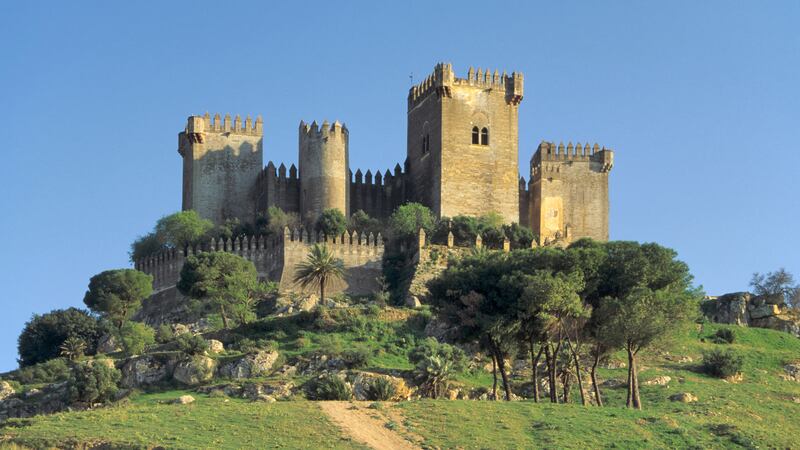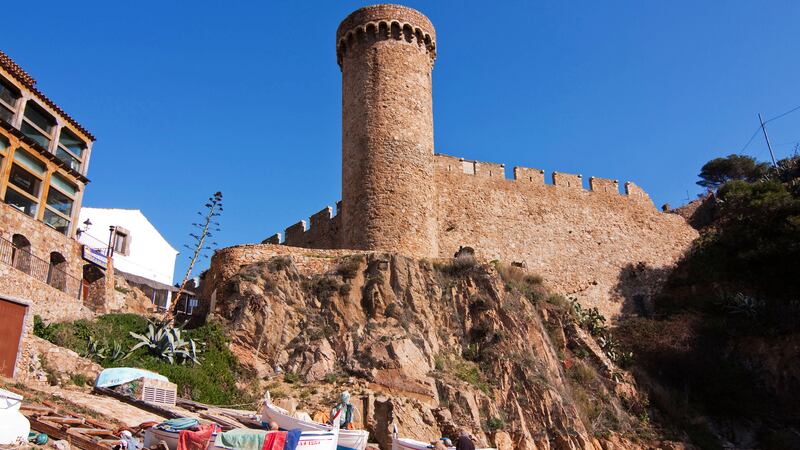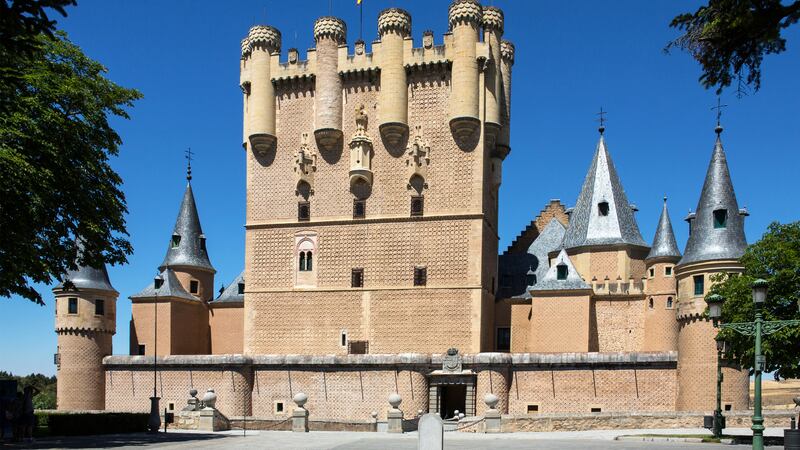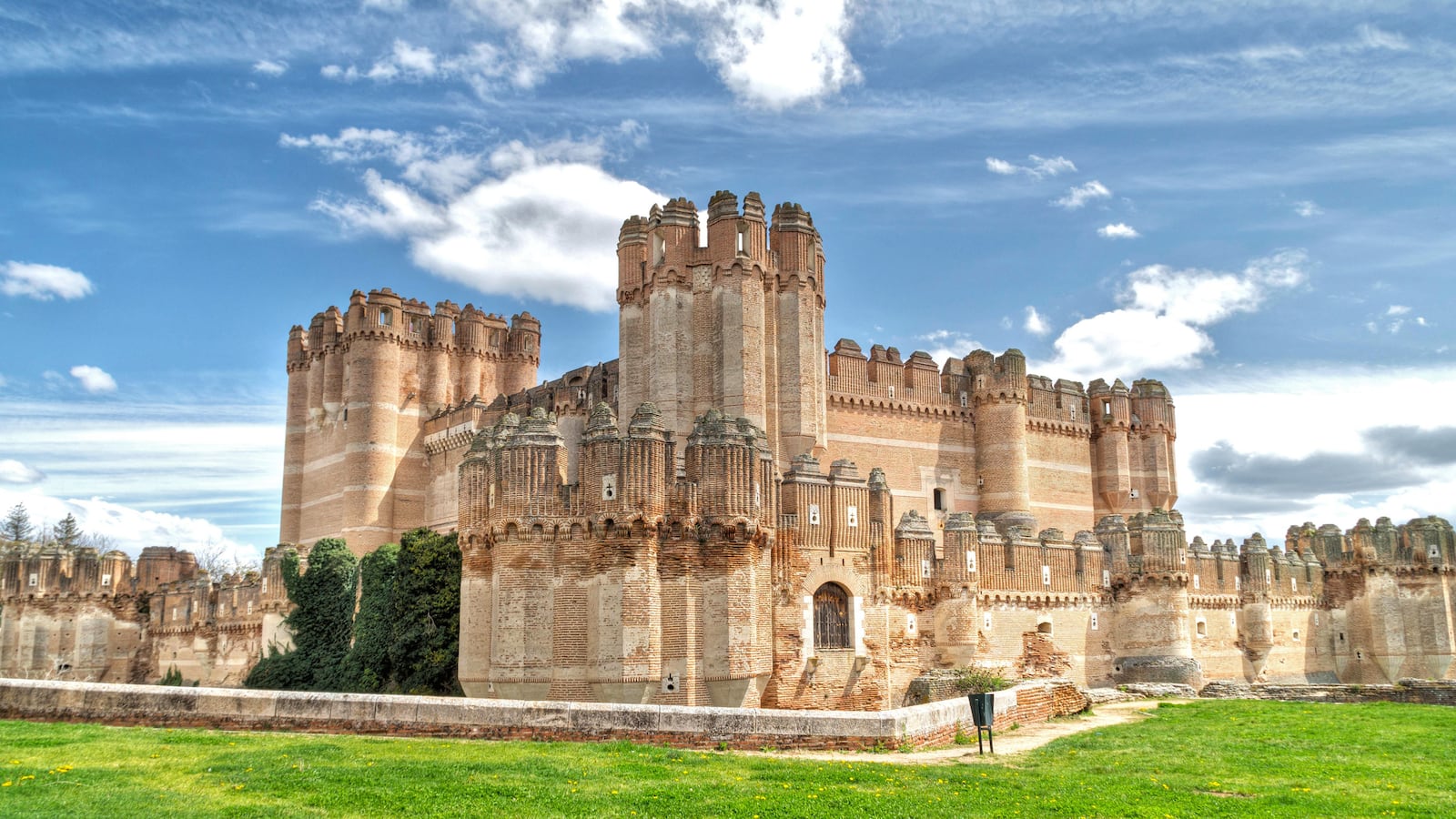Wherever you go in Spain, chances are you won’t be far from a castle. Towering over hilltop villages, rising above cerulean ports, and standing guard amid rolling fields, the awe-inspiring fortresses that dot the Iberian Peninsula went up by the thousands during the eight-century-long Reconquista, the brutal conflict that pitted rival kingdoms and religions against one another. Unlike many castles in Britain and Central Europe—opulent, ornate numbers commissioned by royals—most of Spain’s fortresses were built for battle and were anything but luxurious. But that doesn’t make them any less impressive: From Gothic citadels to Renaissance alcazars to Mudejar strongholds, mark these eight detour-worthy spots on your map to get a taste of Spain’s imperial past.

Moorish castle in Almodovar del Rio Andalusia Spain.
AlamyAlmodóvar del Río in Córdoba, Andalucía
If this eighth-century Moorish stronghold looks familiar, it’s because it was the fictional Highgarden house in Game of Thrones. HBO’s production location scouts no doubt fell head over heels for Almodóvar’s impeccably preserved watchtowers, sprawling inner bailey, and eerie Arab cisterns, highlights you can marvel at on a self-guided tour. History buffs (and gourmands) shouldn’t miss the monthly medieval lunches evoking the spirit of the castle’s one-time resident Peter the Cruel, who infamously closed banquet invitations with, “those who eat improperly or remain unsatisfied shall be sent to the dungeon.”

Bellver Castle in Majorca.
AlamyBellver in Palma, Mallorca
Three miles outside Palma, Mallorca, lies one of Europe’s only circular castles, a Gothic triumph built using cloud-gray stone quarried from the very cliffside it sits upon. Its soaring towers afford panoramic views of the Mediterranean, but the structure’s crown jewel is its courtyard, which, if you squint, could be mistaken for a bullring for its round shape and multilevel, arcaded edges. Though Bellver was built in the 14th century as a private residence for King James II during the transient Kingdom of Mallorca (1276-1349), today the castle welcomes visitors from near and far as the site of Palma’s local history museum. On summer evenings, the interior patio doubles as an open-air hall for classical music concerts (check the calendar for details).
Castillo de Coca, Segovia Province
Jaime Gil de Biedma once wrote of Castillo de Coca, “I love it so much that, if I could, I’d make love to it,” but you don’t have to be a passionate poet to be enamored by this castle’s salmon-pink walls, spiral staircases, geometric motifs, and intricate brick detailing (the handiwork of Andalusian moriscos, Christianized Muslims forcibly converted during the Reconquista). Commissioned by the influential Fonseca family in 1493, the structure is the world’s most spectacular example of Gothic-Mudejar architecture and well worth visiting if you’re staying in Segovia or Valladolid; it’s about midway between the two Castilian cities.

Castillo Nuevo de Manzanares El Real, Madrid Province.
AlamyCastillo Nuevo de Manzanares El Real, Madrid Province
Tucked among the snow-dusted Sierra de Guadarrama mountains 30 miles north of Madrid, Castillo Nuevo de Manzanares El Real (aka Castillo de los Mendoza) is an Isabelline Gothic stunner bounded by four cylindrical towers and hemmed in by a high, crenellated barbican with real-deal machicolations, openings from which screaming-hot oil and human waste could be dropped over invaders below. It’s worth paying the $6 (€5) entrance fee to see the first-floor gallery alone, from which you can take in views of the Santillana Reservoir through delicate Gothic tracery.

Castillo de Ponferrada, León Province
AlamyCastillo de Ponferrada, León Province
Founded by the Knights Templar in 1178, this impenetrable fortress looms over the quaint city of Ponferrada, a major stop on the Camino de Santiago. For centuries it protected not only the local population but also millions of Christian pilgrims trudging toward the Galician town of Santiago de Compostela to pray at the shrine of the apostle St. James. Today the castle boasts a particularly fascinating collection of antique books (reproductions and originals) including a 10th-century bible with vivid illustrations, a 16th-century atlas with wonky old maps, and a 13th-century astronomer’s handbook.

Castillo de Tossa de Mar, Girona Province.
AlamyCastillo de Tossa de Mar, Girona Province
This stone citadel hugs the coastline of a sandy Mediterranean cove and makes beach days all the more Instagrammable. The 300 yards of zigzagging ramparts and seven watchtowers were erected between the 12th and 14th centuries to ward off pirate attacks; so was a small castle, of which only rubble remains. In the early 19th century, the fortress sprang into action again to defend against invading French troops in the Peninsular War. If an uphill climb doesn’t appeal, take the tourist train to the top and explore the castillo grounds from there.

The 15th Century Castillo de Coca at the Alcazar in the city of Segovia in the Castilla-y-Leon region of central Spain.
AlamyAlcázar de Segovia, Segovia
Legend has it that Walt Disney modeled his ubiquitous Disney Castle on this royal fortress, whose conical turrets and thickset curtain walls conceal sumptuous interiors distinguished by carved ceilings, intricate plasterwork, and Mudejar-Gothic tracery. Though the site of the Alcázar—on a strategic precipice overlooking rolling plains—has been occupied since at least Roman times, most of the current structure was built between 1410 and 1455 (and rebuilt in 1862 following a fire). Ascend the claustrophobia-inducing spiral staircase in the Torre de Juan II, and you’ll be rewarded with sweeping views of Segovia’s old town to the backdrop of the Sierra de Guadarrama mountains.

Castillo de La Calahorra castle, La Calahorra, Granada province, Andalusia, Spain, Europe.
AlamyCastillo de La Calahorra, Granada Province
Castillo de La Calahorra rises from the dusty Sierra Nevada foothills like a mirage—you won’t believe your eyes when you see this Italian Renaissance marvel come into view. Completed in the early 16th century, an era when castles were being demolished by the monarchy, the miracle castillo is considered to be the first notable Italian Renaissance building in Spain, designed by a Genoese architect. Its original owner, an Andalusian marquis named Rodrigo de Mendoza, took up residence in the castle for a mere eight years before moving elsewhere. If you’re lucky enough to score a tour of the privately owned estate (some Wednesdays, by phone appointment only: +34 958 677 098; tours in Spanish), feast your eyes on Carrara marble balustrades, Corinthian capitals, and a traditional Italianate cortile (porticoed patio).






